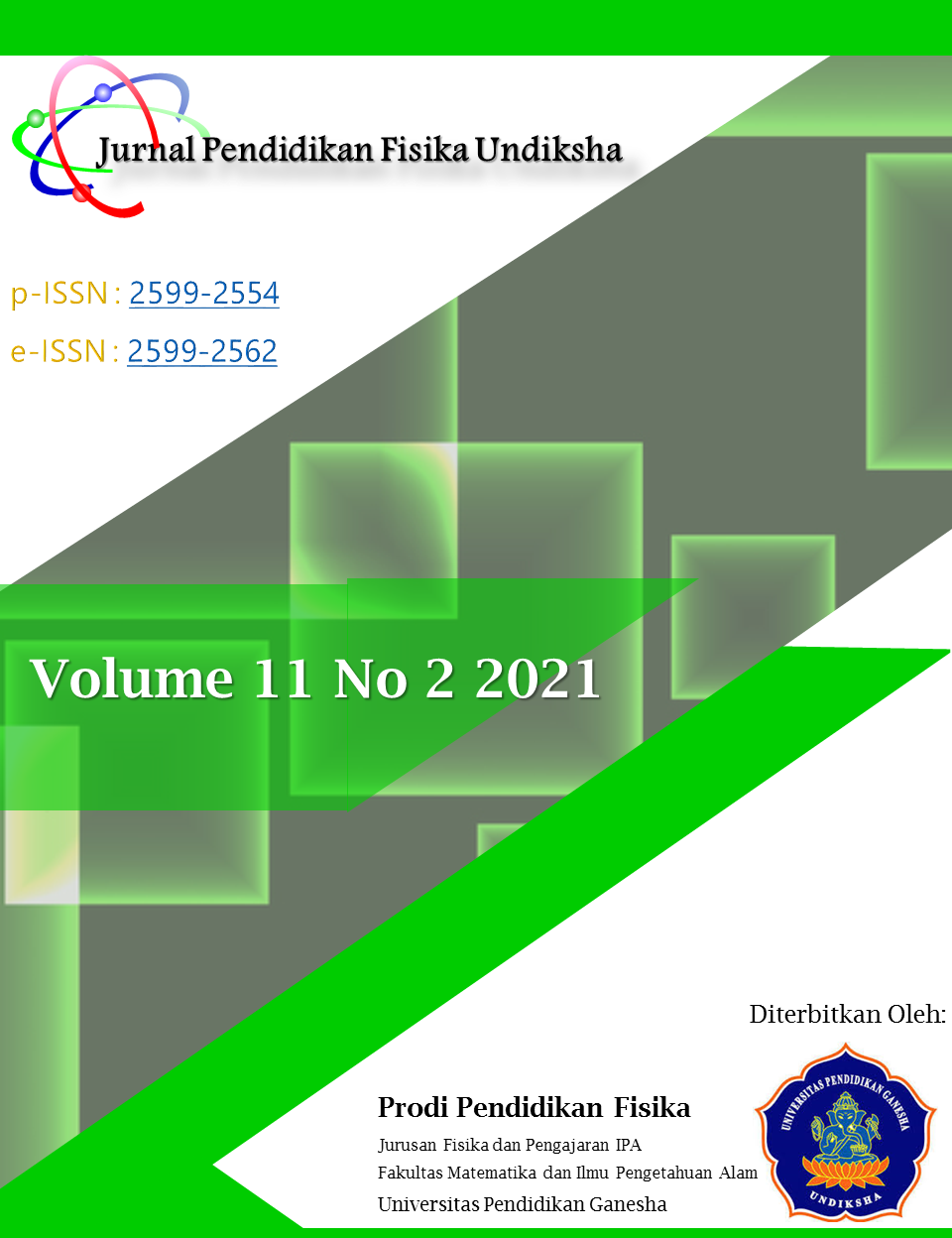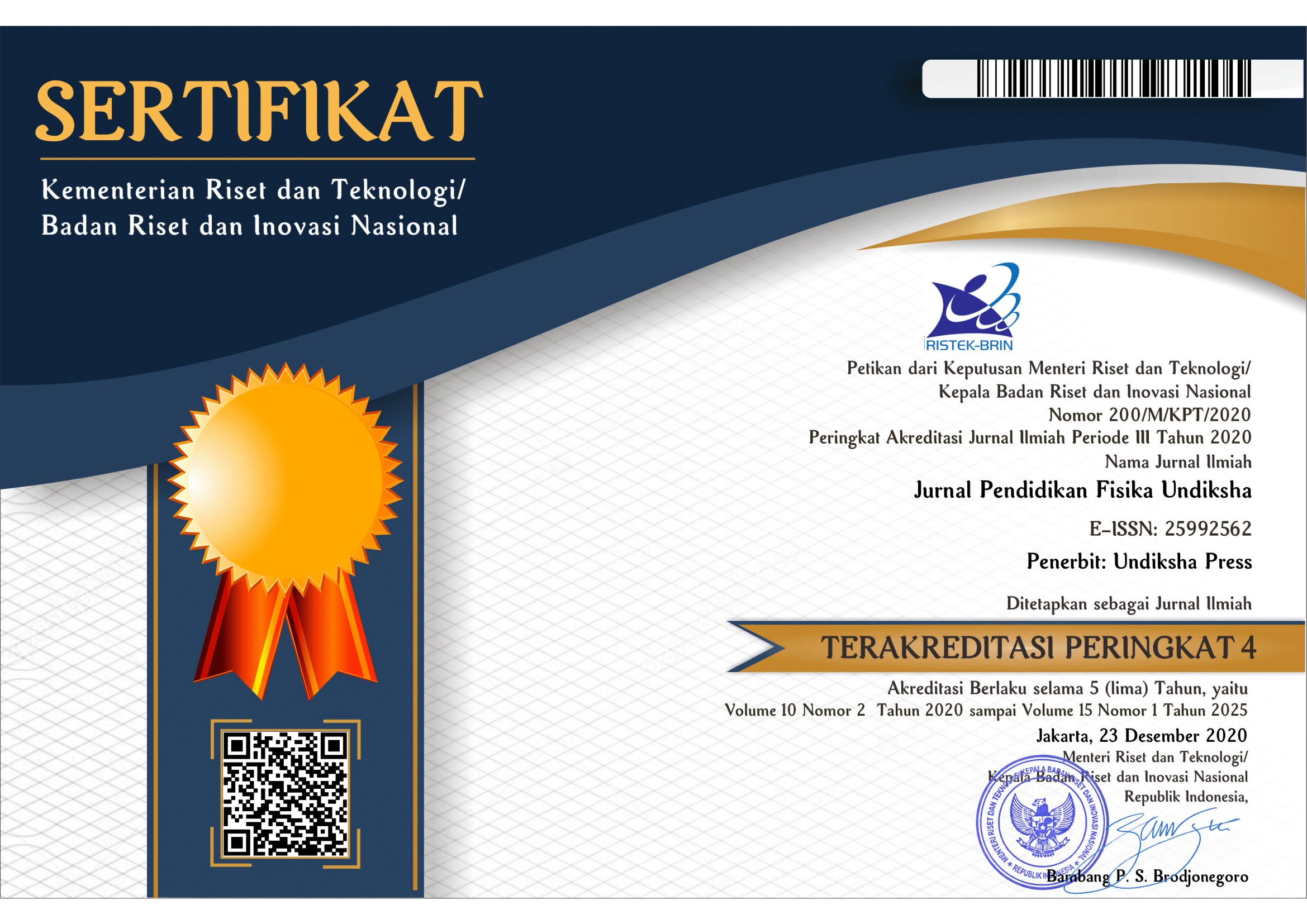IDENTIFIKASI MISKONSEPSI SISWA PADA MATERI CAHAYA MENGGUNAKAN FOUR TIER DIAGNOSTIC TEST
DOI:
https://doi.org/10.23887/jjpf.v11i2.33247Keywords:
Misconception, Four-tier diagnostic test, LightAbstract
A misconception is a problem that always arises in the world of education. Misconceptions occur in various fields of education, including the field of science, in this case science learning. This research was conducted to identify the misconceptions of students at the Junior High School level regarding light material. The approach used in this research is quantitative. The research was conducted at one of the state junior high schools in Indragiri Hilir Regency, Riau. The population in this study were students of class IX. The research sample was 25 students who had studied the material of light. Sampling using a purposive sampling technique. The data uses a four-tier diagnostic test instrument. Collecting data process uses google form. The results showed that students experienced misconceptions in the medium category with a proportion of 35.60%. Students experience the highest misconceptions on the following four concepts: 1) The properties of light; 2) Light Reflection; 3) The effect of the color of objects on the color of light; 4) the nature of polychromatic light as it passes through colored objects.
References
Arif Widiyatmoko, &. (2018). Literature Review of Factors Contributing to Students’ Misconceptions in Light and Optical Instruments. International Journal of Environmental and Science Education, 13(1), 853–863.
Fariyani, Q., Rusilowati, A., & Sugianto. (2015). Pengembangan Four-Tier Diagnostic Test Untuk Mengungkap Miskonsepsi Fisika Siswa Sma Kelas X. Journal of Innovative Science Education, 4(2), 41–49.
Gurel, D. K., Eryilmaz, A., & McDermott, L. C. (2015). A review and comparison of diagnostic instruments to identify students’ misconceptions in science. Eurasia Journal of Mathematics, Science and Technology Education, 11(5), 989–1008. https://doi.org/10.12973/eurasia.2015.1369a
Haloho, F., & Wiyono, K. (2016). Pengembangan Buku Kerja Siswa Berbasis Inkuiri Materi Optika Geometri Kelas X Sekolah Menengah Atas. Jurnal Inovasi Dan Pembelajaran Fisika, 3(1), 30–36.
Handayani, S. L., & Rukmana, D. (2018). Perbandingan miskonsepsi mahasiswa pgsd uhamka materi optik geometri. Jurnal Ilmiah Pendidikan Dasar. V(1), 44–56.
Istighfarin, L. (2015). Profil Miskonsepsi Siswa Pada Materi Struktur Dan Fungsi Jaringan Tumbuhan. BioEdu, 4(3), 247337.
Kaewkhong, K., Mazzolini, A., Emarat, N., & Arayathanitkul, K. (2010). Thai high-school students’ misconceptions about and models of light refraction through a planar surface. Physics Education, 45(1), 97–107. https://doi.org/10.1088/0031-9120/45/1/012
Laeli, C. M. H., Gunarhadi, & Muzzazinah. (2020). Misconception of Science Learning in Primary School Students. 397(Icliqe 2019), 657–671. https://doi.org/10.2991/assehr.k.200129.083
Liu, G., & Fang, N. (2016). Student misconceptions about force and acceleration in physics and engineering mechanics education. International Journal of Engineering Education, 32(1), 19–29.
Nehru, N., & Irianti, E. (2019). Analisis hubungan rasa ingin tahu dengan hasil belajar. Jurnal Pembangunan Dan Pendidikan: Fondasi Dan Aplikasi, 7(1), 53–59. https://doi.org/10.21831/jppfa.v7i1.25234
Suniati, N. M. S., Sadia, I. W., & Suhandana, G. A. (2013). Pengaruh implementasi pembelajaran kontekstual berbantuan multimedia interaktif tehadap penurunan miskonsepsi (studi kuasi eksperimen dalam pembelajaran cahaya dan alat optik di SMP Negeri 2 Amlapura). Jurnal Administrasi Pendidikan Indonesia, 4(1).
Suparno, P. (2013). Miskonsepsi & Perubahan Konsep Dalam Pendidikan Fisika. Jakarta: PT Grasindo
Suwindra, I. N. P., & Mardana, I. B. P. (2018). Strategi Pemblajaran Guru: Relevansinya Dalam Mereduksi Miskonsepsi Dan Peningkatan Prestasi Belajar Siswa. Jurnal Pendidikan Fisika Undiksha, 8(1), 21-30.
Tayubi, Y. R. (2005). Identifikasi Miskonsepsi pada Konsep-Konsep Fisika Menggunakan Certainty of Response Index (CRI). Jurnal UPI, 24(3), 4–9.
Downloads
Published
Issue
Section
License

Jurnal Pendidikan Fisika Undiksha is licensed under a Creative Commons Attribution-ShareAlike 4.0 International License.







